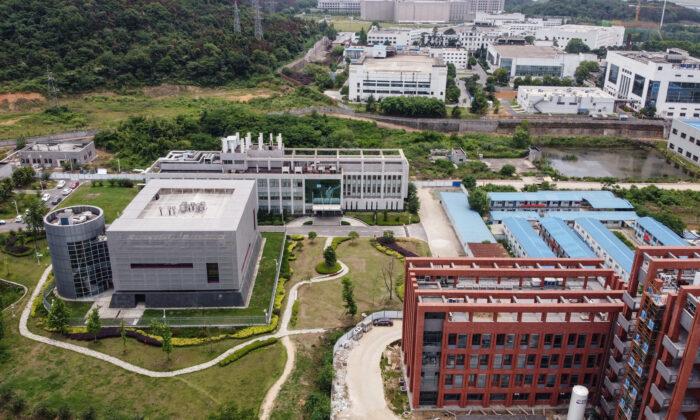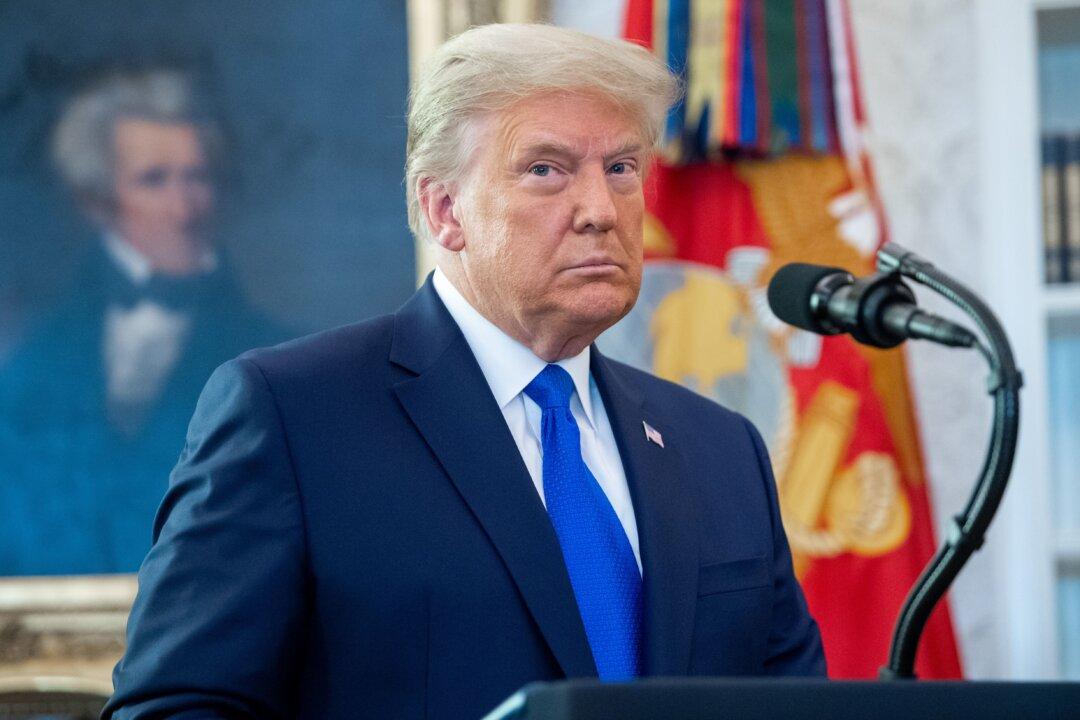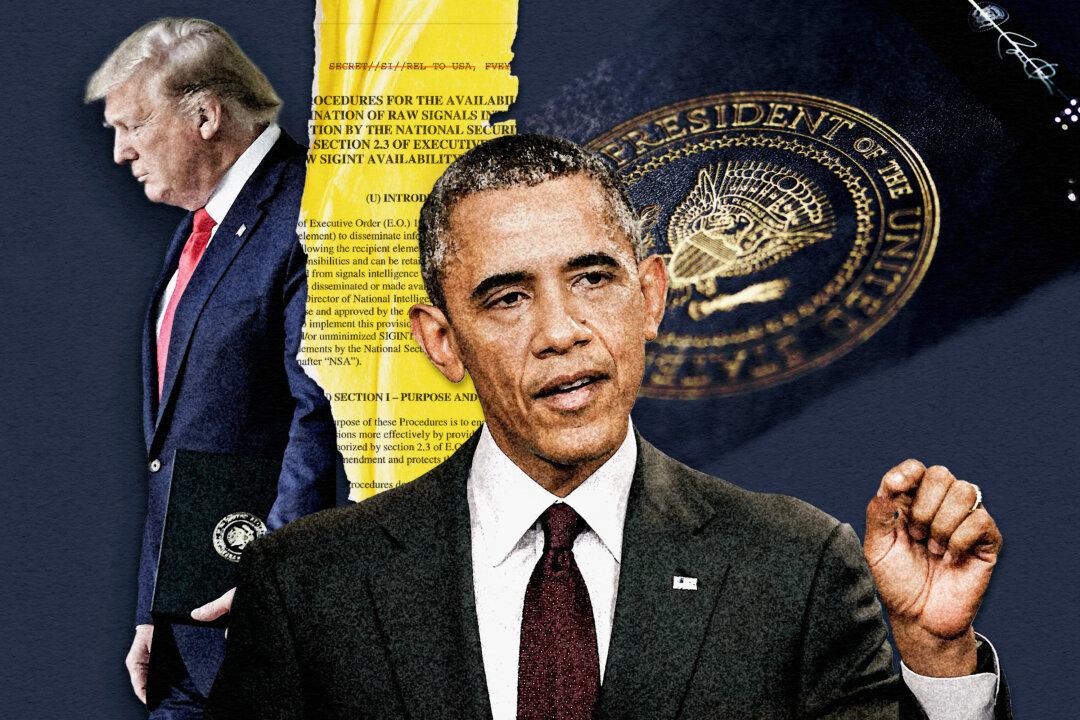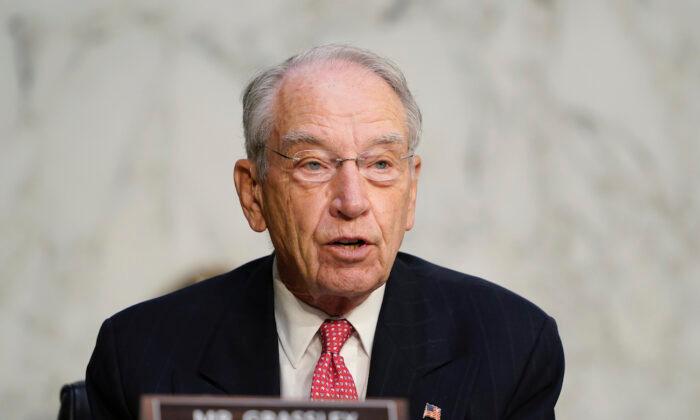Commentary
In May, President Joe Biden gave the intelligence community 90 days to write a report on the origins of COVID-19. The declassified version of that
assessment has now been released.
The report is only 493 words long and curiously ignores readily available information, instead choosing to focus on and reinforce questions that are, for the most part, unknowable.
Specifically, the intelligence community (IC) claimed that in order to reach a conclusive assessment, it required “clinical samples or a complete understanding of epidemiological data from the earliest cases.”
This China-reliant approach aligns with a
recent response from Dr. Anthony Fauci, director of the National Institute of Allergy and Infectious Diseases (NIAID). When he finally conceded in June that the virus might have originated in a Wuhan lab, Fauci also said that clinical samples of the earliest cases were needed.
At the same time, while the IC claims that China’s cooperation is needed to determine the origins of COVID-19, it acknowledges that China has refused to cooperate with any true investigation.
Fauci and the IC both understand that if there was information helpful to the Chinese Communist Party (CCP), that information would have been released immediately.
The report, unsigned but issued under a Director of National Intelligence letterhead, appears to be structured in a manner designed to avoid upsetting China. More importantly, the report effectively protects China, repeatedly giving weight to the lack of foreknowledge of the outbreak on the part of China officials. The report ignores that if the pandemic resulted from a lab accident, no official would have had foreknowledge.
The IC also appears to conflate cause and effect by claiming that China’s failure to cooperate with an investigation is motivated by “frustration” that the international community is “using the issue to exert political pressure on China.”
Notably, the IC has shown a marked lack of interest in the copious amount of data that is already available and doesn’t require CCP assistance.
Perhaps the most obvious fact pointing at a lab leak is simply that Wuhan is at least 1,000 miles from natural bat habitats—a point not even mentioned in the IC’s report.
Additionally, Wuhan was the only location in China where bat virus experiments were taking place. In fact, Wuhan had at least three facilities conducting such work—the Wuhan Institute of Virology (WIV), the Wuhan CDC Lab, and the Wuhan University Center for Animal Experiment.
The director of the WIV, Shi Zhengli, admitted that she
never expected this kind of virus to emerge in Wuhan. When viruses emerged naturally in
the past, they emerged in southern China.
Also ignored by the IC report was the type of research being conducted at WIV since at least 2007, which has been well-documented.
Research papers provide direct evidence of increasingly sophisticated gain-of-function experiments—a process whereby viruses are deliberately made more virulent in order to predict emerging diseases—being carried out by the WIV lab in the years leading up to the pandemic, including a number of experiments specifically designed to make coronaviruses more transmissible to humans.
Some of these gain-of-function experiments were also detailed in a Nov. 9, 2015,
article in the journal Nature about experiments that were being conducted at the Wuhan lab using “chimeric viruses” in mice.
Notably, in 2014, Fauci’s NIAID awarded a $3.7 million
grant to the New York-based EcoHealth Alliance, headed by Peter Daszak.
According to Dr. Francis Collins, the director of the National Institutes of Health (NIH), some of the grant funds “went to Wuhan” as part of “a subcontract from EcoHealth.” In August 2020, after President Donald Trump canceled the first grant, Fauci awarded Daszak’s EcoHealth a new grant of $7.5 million.
Only one section of the report refers to animal handling and sampling by the WIV. This section is in reference to one intelligence agency that concluded that it was moderately confident that the virus may have leaked from a Wuhan lab. Notably, all other agencies leaned toward natural origins for the virus’s outbreak.
The report ignores that live bats were kept at the WIV, apparently the only location in Wuhan where bats could actually be found. The report also fails to note that thousands of bat samples were brought from southern China to Wuhan by
lab scientists.
The huge depository of bat samples in Wuhan was
confirmed by Daszak in July 2020, when he discussed the early discovery of a close genetic match to COVID-19.
“It was just one of the 16,000 bats we sampled. It was a faecal sample, we put it in a tube, put it in liquid nitrogen, took it back to the lab. We sequenced a short fragment.”
Daszak, the person through whom Fauci was providing funding for the WIV, denied that live bats were kept at the Wuhan lab, claiming that that wasn’t the way science worked. Daszak later
deleted his tweet denial without explanation. Pictures from inside the WIV lab have since
emerged, confirming that live bats were indeed held by laboratory staff.
The report also fails to address the fact that WIV director Shi tried to cover up the fact that she had maintained possession of the closest known relative to COVID-19 for more than seven years. Shi suddenly renamed the virus in early 2020 at the onset of the pandemic, thereby obscuring that her lab had held a closely related virus.
Shi also obfuscated the virus’s origin. The location where Shi originally found the COVID-like virus was later
discovered to be the Mojiang Mine, where three miners had died with COVID-like symptoms in 2012. Shi would later concede that the
Mojiang Mine was indeed the source of her virus.
Shi’s research on bat coronaviruses had previously drawn the attention of diplomats at the U.S. Embassy in China. In 2018, after visiting the WIV, they sent a
number of cables to the State Department warning of the inadequate safety conditions at the lab.
Fauci’s own official representative in China, Chen Ping, had herself sent multiple messages to Fauci’s office—all of which should have raised red flags. Chen noted that research papers detailing gain-of-function experiments at the WIV were being published as NIH-funded work.
Her inquiries with Fauci’s office appear to have gone unanswered. Chen also complained that she was being denied access to the WIV. When, after two years, Chen was finally allowed to visit the facility, she was
forbidden from
taking any pictures inside the lab.
Since the start of the pandemic, unearthed
video footage taken by Chinese TV crews inside the lab has been used to pinpoint a number of biosafety lapses, as well as the fact that the lab was keeping live bats.
In 2015, an article in Nature
specifically warned about the pandemic potential from the WIV experiments. Richard Ebright, a molecular biologist and biodefense expert at Rutgers University, presciently stated, “The only impact of this work is the creation, in a lab, of a new, non-natural risk.”
There is no mention of any of these pre-pandemic warnings in the IC’s report. Nor is there any mention of the warnings from the French government, which had initially helped with the construction of the WIV’s BSL-4 (biosafety level 4) lab as part of a joint venture with the Chinese regime.
However, the French government later
refused to certify the WIV’s lab, based on bioweapon concerns from military officials. France also denied China access to safety equipment and viruses over similar concerns that these could be used for bioweapons research.
Additionally, in 2009, then-Secretary of State Hillary Clinton was
warned in a diplomatic cable of the construction of the WIV BSL-4 lab and the potential for biological weapons proliferation.
The IC report also failed to note that both the WIV and the Wuhan CDC were conducting bat coronavirus experiments in BSL-2 labs, a low biosafety environment that falls below the
accepted threshold of safety for coronavirus research levels. A minimum of BSL-3 is
required for working with coronaviruses, including isolation, culture, and amplification.
When Shi finally
admitted to conducting coronavirus experiments at BSL-2, a prominent natural origins supporter, Ian Lipkin,
changed his view on the pandemic’s origin. Lipkin now thinks the virus did come out of a Wuhan lab, saying: “It shouldn’t have happened. People should not be looking at bat viruses in BSL-2 labs. My view has changed.”
A more recent development also ignored in the IC’s report is that the World Health Organization’s (WHO) lead origins investigator, Peter Ben Embarek, has now claimed in a
Danish documentary that a lab leak is likely and “may well have been started by an employee at one of the city’s laboratories.”
Embarek, who headed the WHO’s team that visited Wuhan in February, had earlier claimed that a lab leak was
extremely unlikely. But he now admits that that claim was the result of pressure from the Chinese regime. Embarek
told the Danish documentary team that after two days of negotiations, a deal was struck between his team and their Chinese counterparts.
Under the
deal with the CCP, Embarek would be allowed to mention the lab leak theory—but only on the condition that it was determined to be “extremely unlikely” and that there would be no further studies into the issue.
The IC report also fails to address a Feb. 1, 2020, teleconference that was
hastily organized by Fauci and Dr. Jeremy Farrar,
director of the British Wellcome Trust. The teleconference took place after the previous night’s
public reporting of a potential connection between COVID-19 and the WIV.
Fauci and Farrar were concerned about previous U.S. involvement with the lab, and that they had knowledge of public statements made by the Wuhan lab’s director about U.S. funding being used for controversial gain-of-function research conducted there.
Following the teleconference, public discussion of the source possibly being a lab leak was actively suppressed by social media platforms, health officials, and the WHO.
Teleconference participants were also instrumental in publishing two influential articles that were used extensively by media organizations to
push the natural-origins theory. Simultaneously, alternative theories—including that of a possible lab leak—were widely discredited as conspiracy theories.
Another related area of focus that the IC report failed to address was the funding of the WIV from domestic sources in the U.S. government and how those funds were being utilized. The funding agencies, including Fauci’s NIAID and NIH, have responsive records and documentation in their possession, as does Daszak’s EcoHealth Alliance, through whom funding of the WIV was arranged.
Indeed, EcoHealth documents that were
recently released under the Freedom of Information Act have confirmed that Fauci’s NIAID funded gain-of-function experiments—including the construction of novel chimeric SARS-related coronaviruses at the WIV. Those engineered viruses were tested on humanized mice and showed that the viruses could infect humans and were more pathogenic than the original virus.
Publishers such as Springer-Nature and Lancet, both of whom aggressively advanced the natural-origins narrative, have archives of early drafts, data, and review reports of the many papers submitted by WIV staff. The Wellcome Trust, with whose help Fauci orchestrated his secret teleconference, has records pertaining to both its role in the teleconference as well as in
funding the WIV.
The lab that
trained WIV staff, the Galveston National Laboratory in Texas, has detailed information both on the training and the staff. The government of France has records on the construction of the lab and on the disputes that ultimately led France to withdraw from the WIV. The EU also funded the WIV and has pertinent records.
There are also whistleblowers from Western countries. While it isn’t realistic to gain direct access to Chinese whistleblowers such as Xiao Botao, a scientist from Wuhan, who was the first to
publicly blame a lab leak for the pandemic on Feb. 6, 2020, there are many others—including some scientists who may have been initially misled by their peers.
Andrew Huff, who used to work as
associate vice president at Daszak’s EcoHealth, has since
posted a number of statements on LinkedIn blaming a lab leak for the pandemic and also blaming international scientists for collaborating in the lab leak cover-up.
In response to the claim that the virus’s origin couldn’t be determined, Huff
stated that “you can read the peer-reviewed studies, patent filings, grant applications, and Fauci emails, and it is very clear what Fauci’s role was.”
There are also a number of scientists involved in initial efforts to push the natural-origins theory who have since had a change of heart. Stanley Perlman now says that the lab leak theory is “
back on the table.” Charles Calisher
claims that it was “over the top” to call the lab leak a conspiracy theory.
Another scientist, Peter Palese, is now
demanding a proper investigation. Most notably, University of Chicago professor Bernard Roizman
has stated that the virus originated from the lab due to “sloppiness,“ claiming that Wuhan lab personnel “can’t admit they did something so stupid.”
The intelligence community’s report has stated that “China’s cooperation most likely would be needed to reach a conclusive assessment of the origins of COVID-19.”
But there is a wealth of information in the public realm that is readily available and doesn’t require the vast resources of our nation’s intelligence communities or the CCP’s cooperation.
If the IC’s intention was to provide the public with an answer on the origins of the virus, it could easily do so.
Views expressed in this article are opinions of the author and do not necessarily reflect the views of The Epoch Times.







Friends Read Free